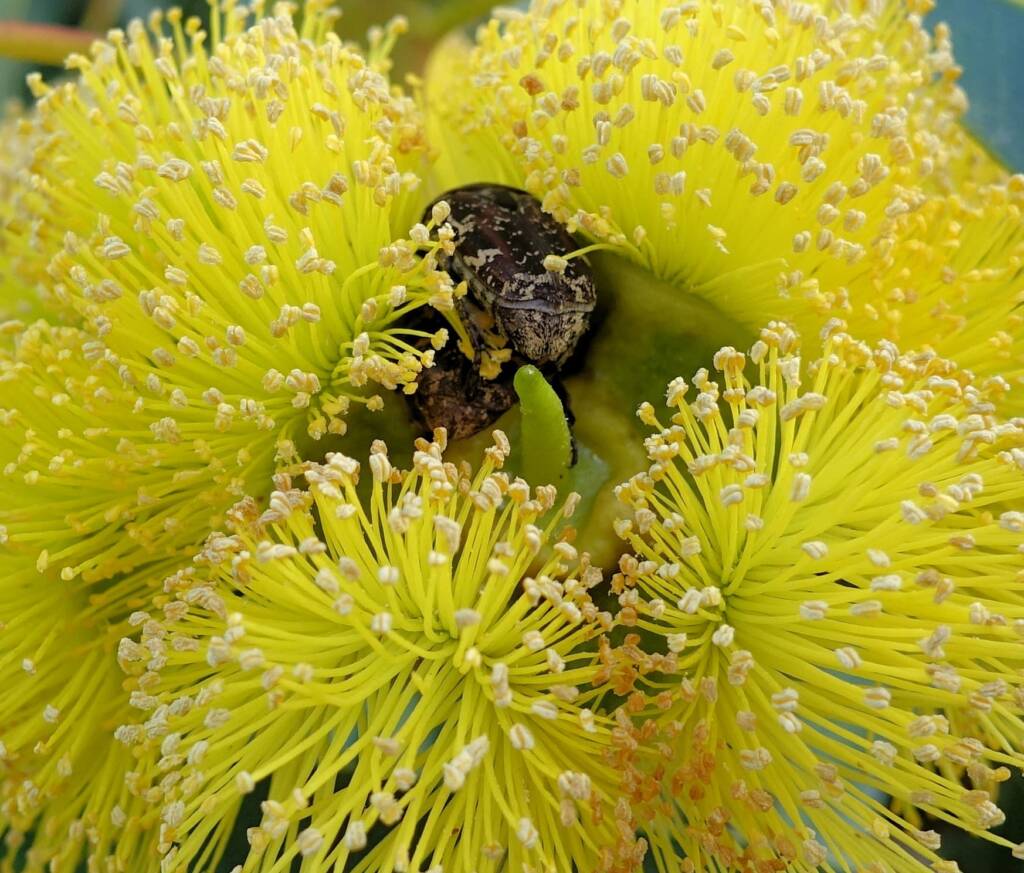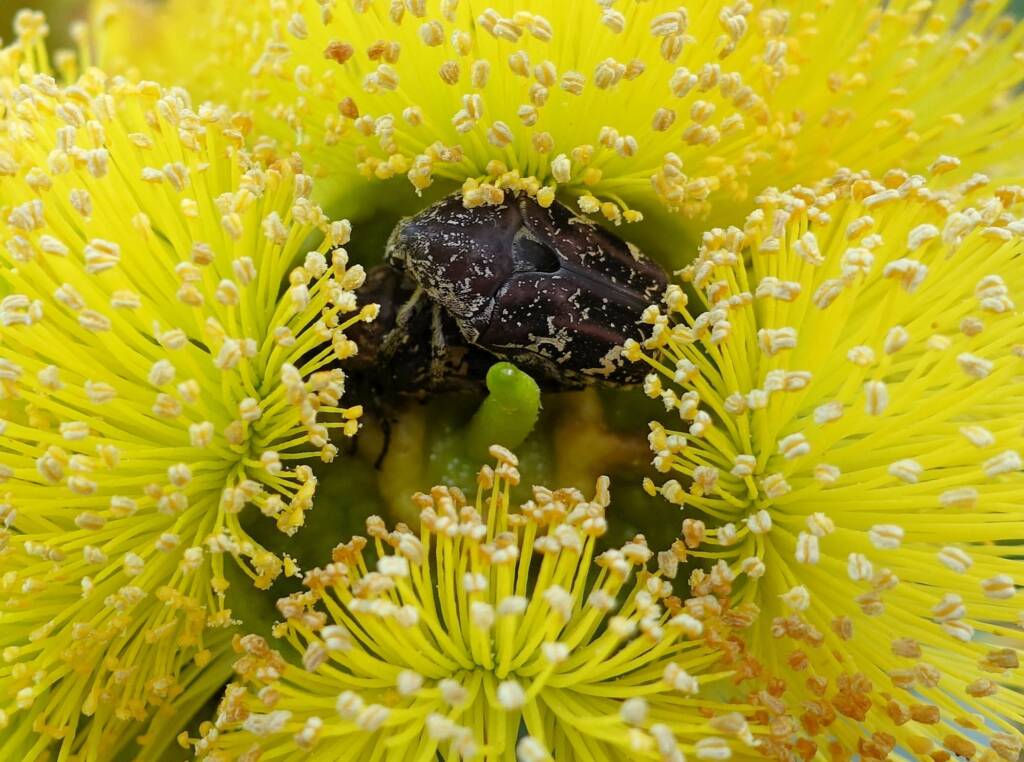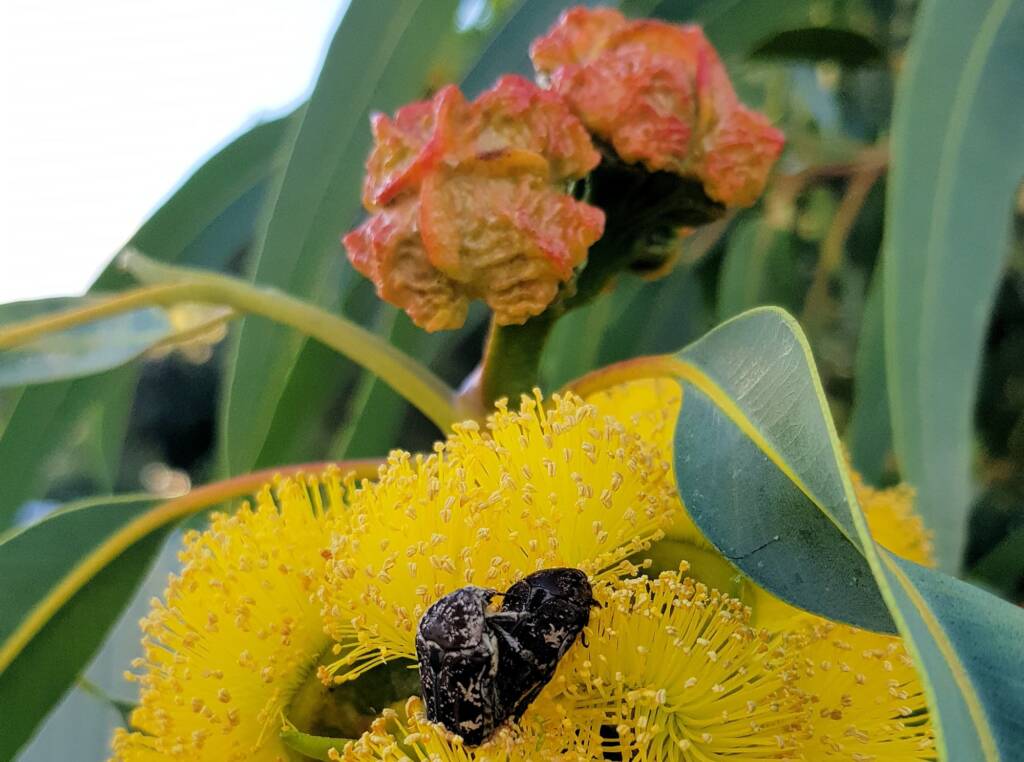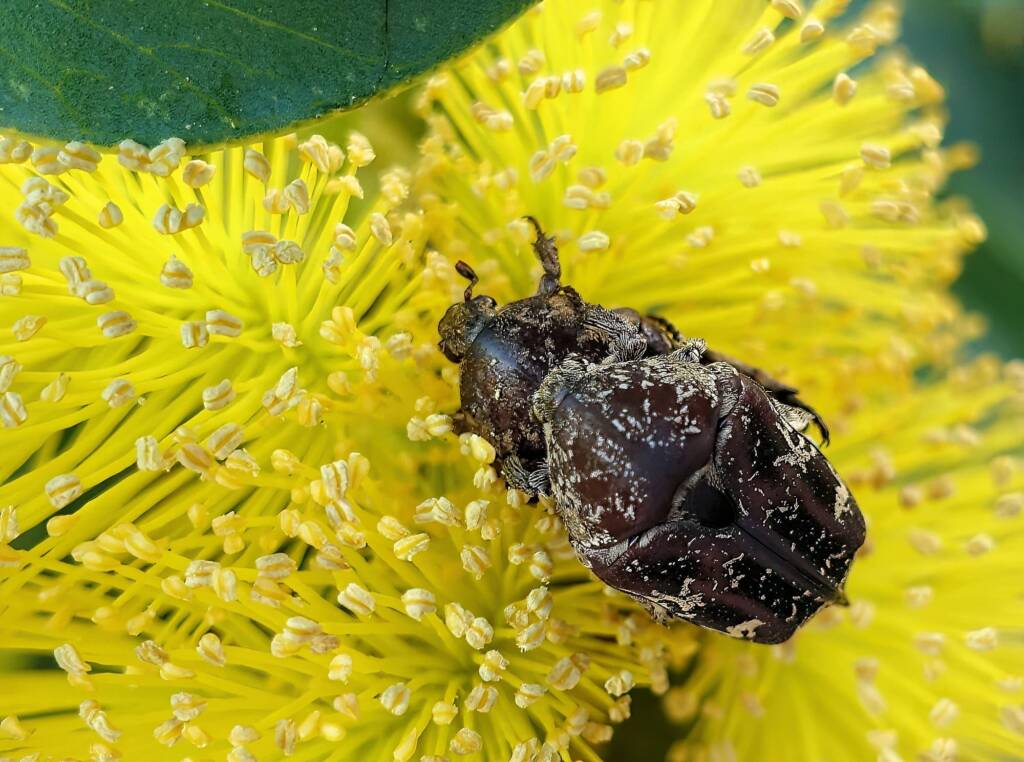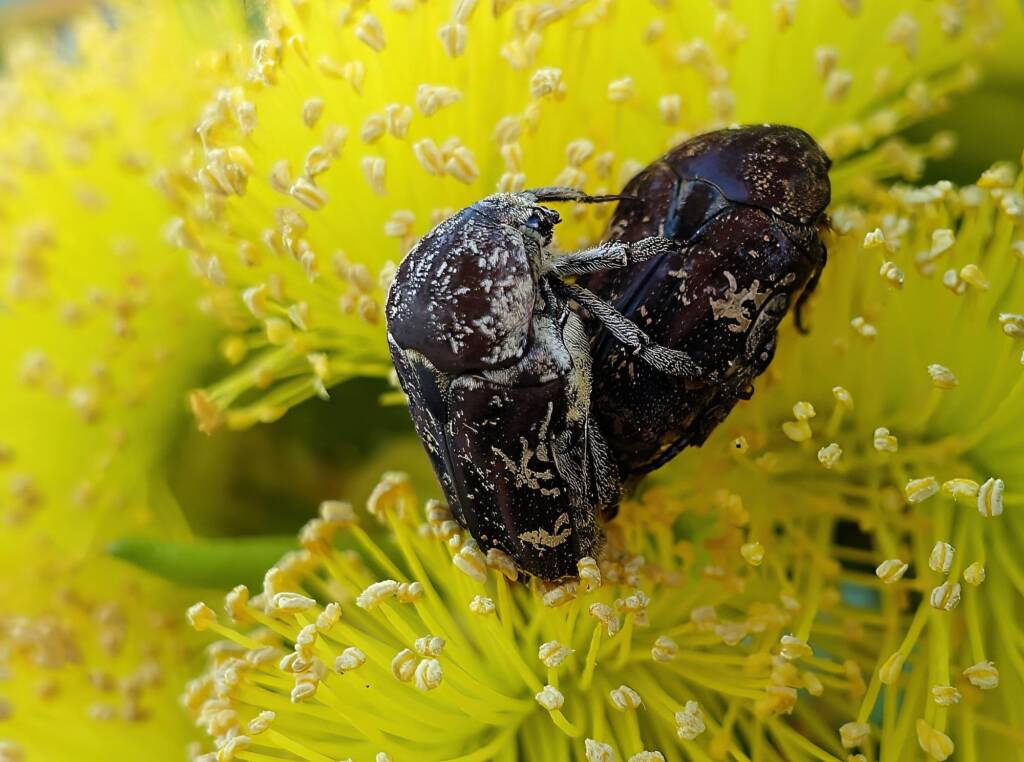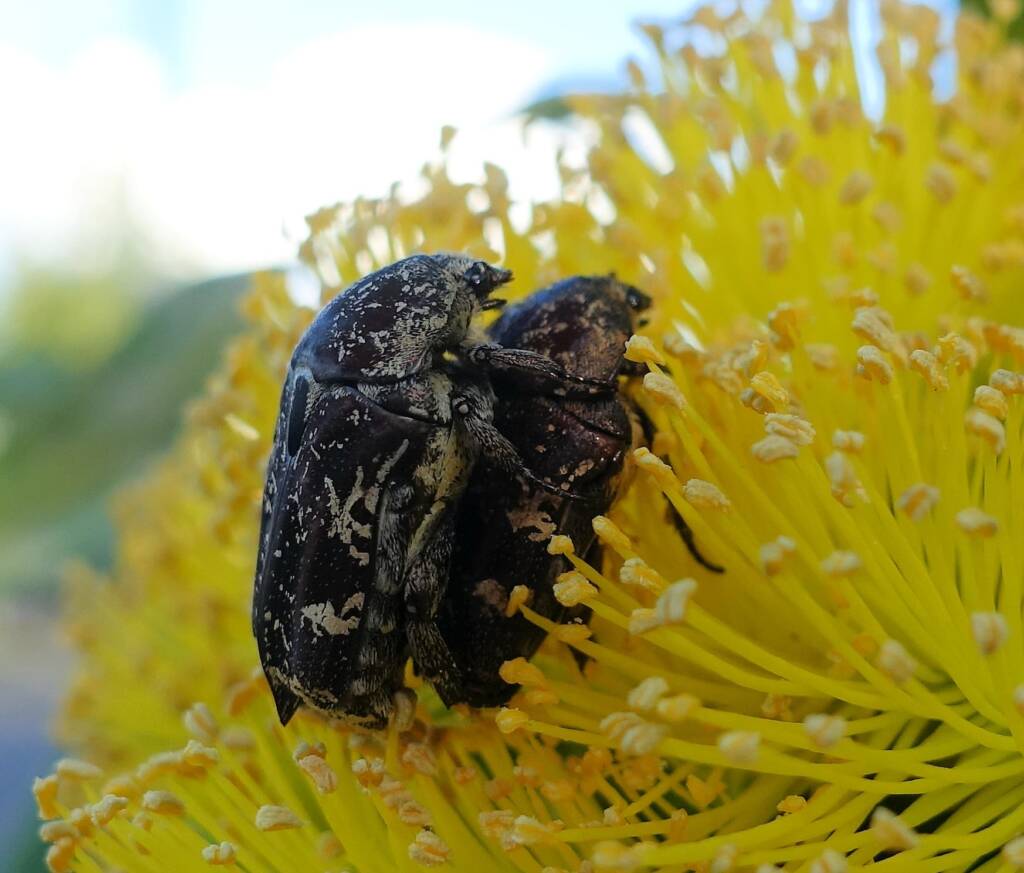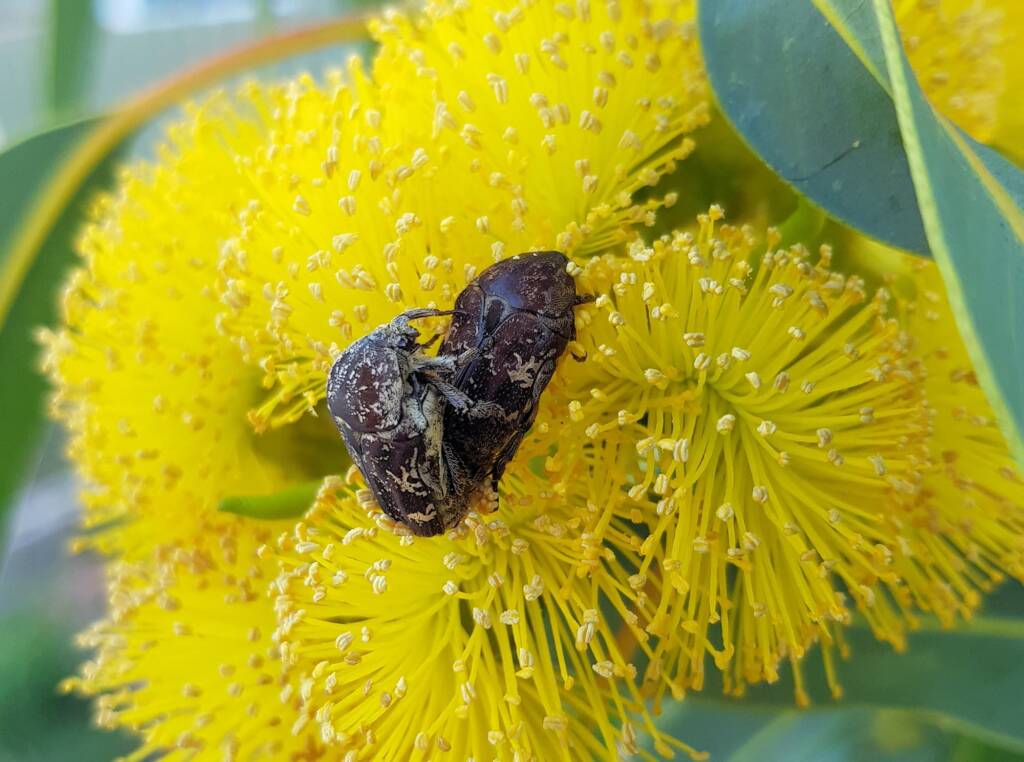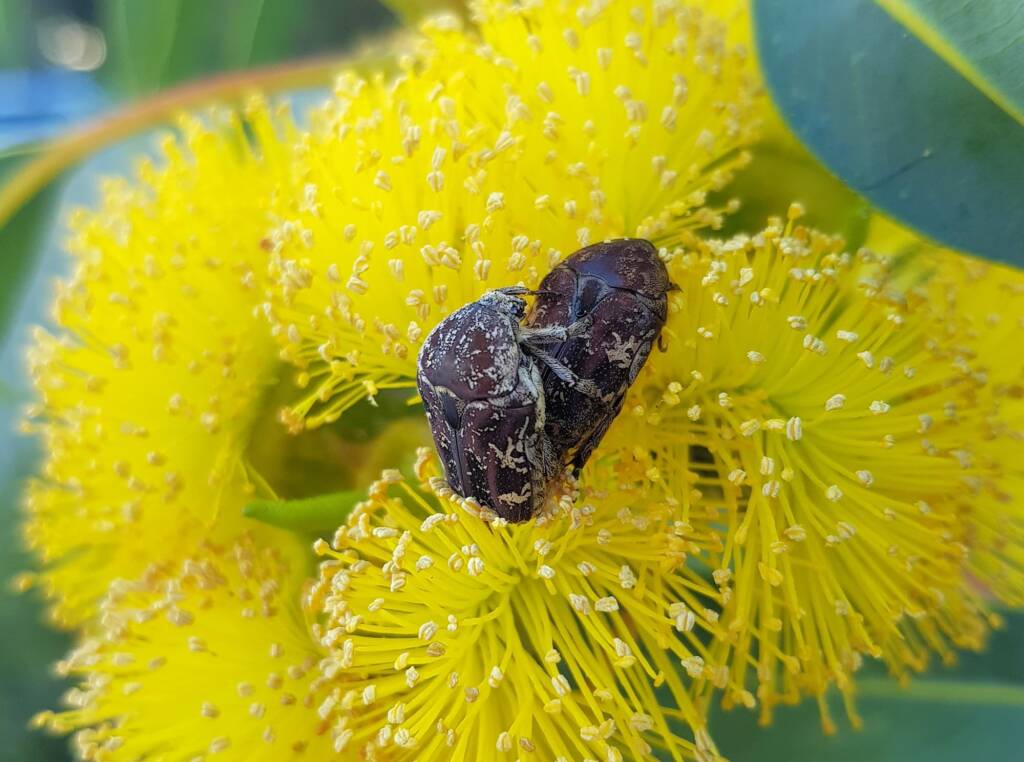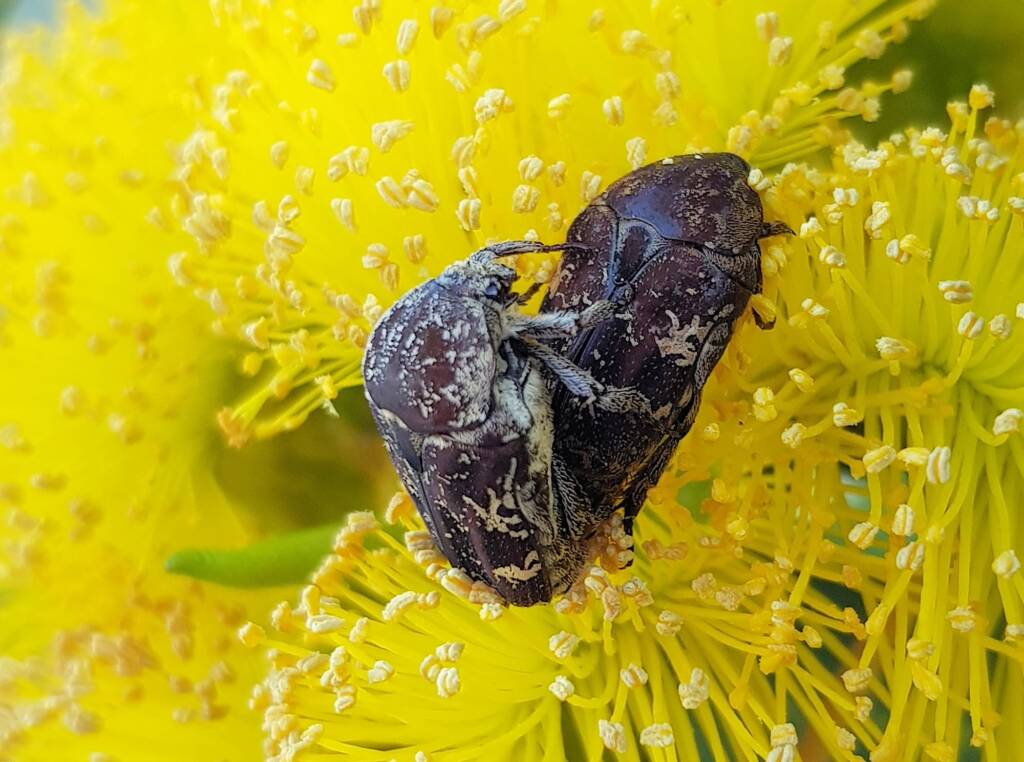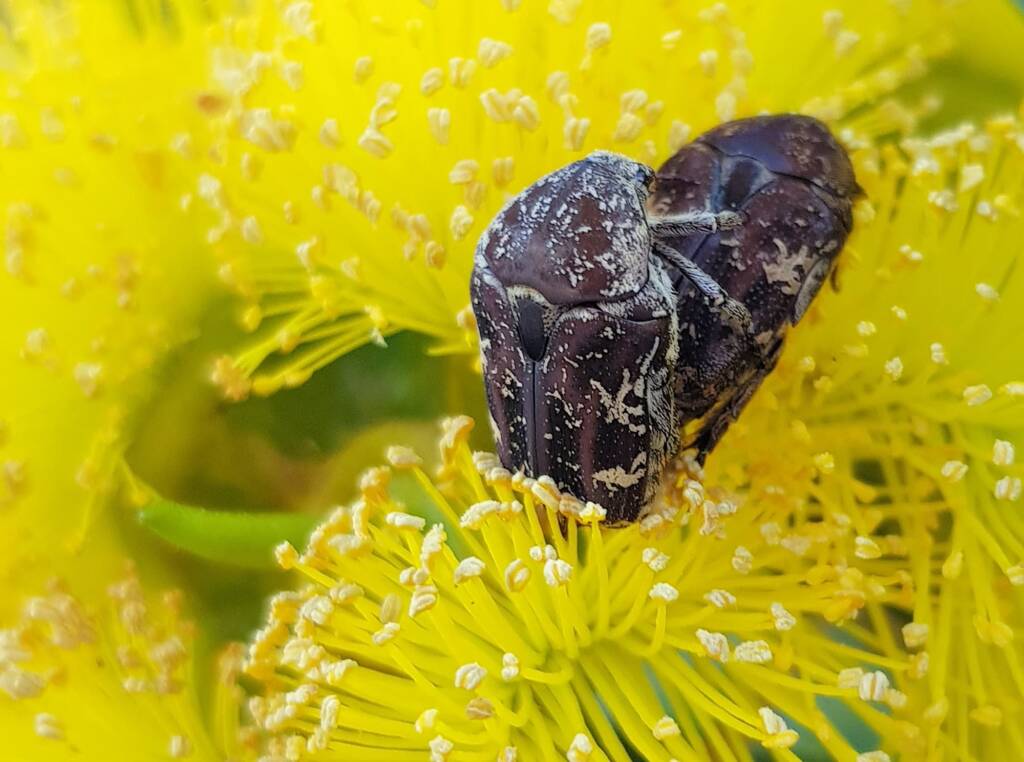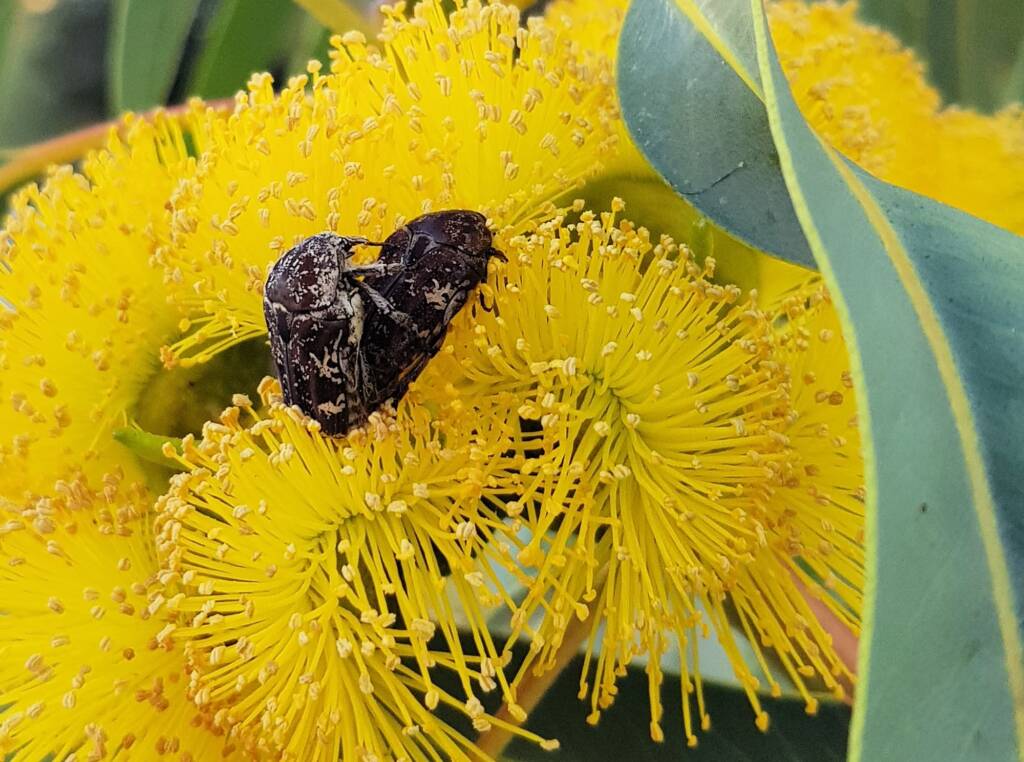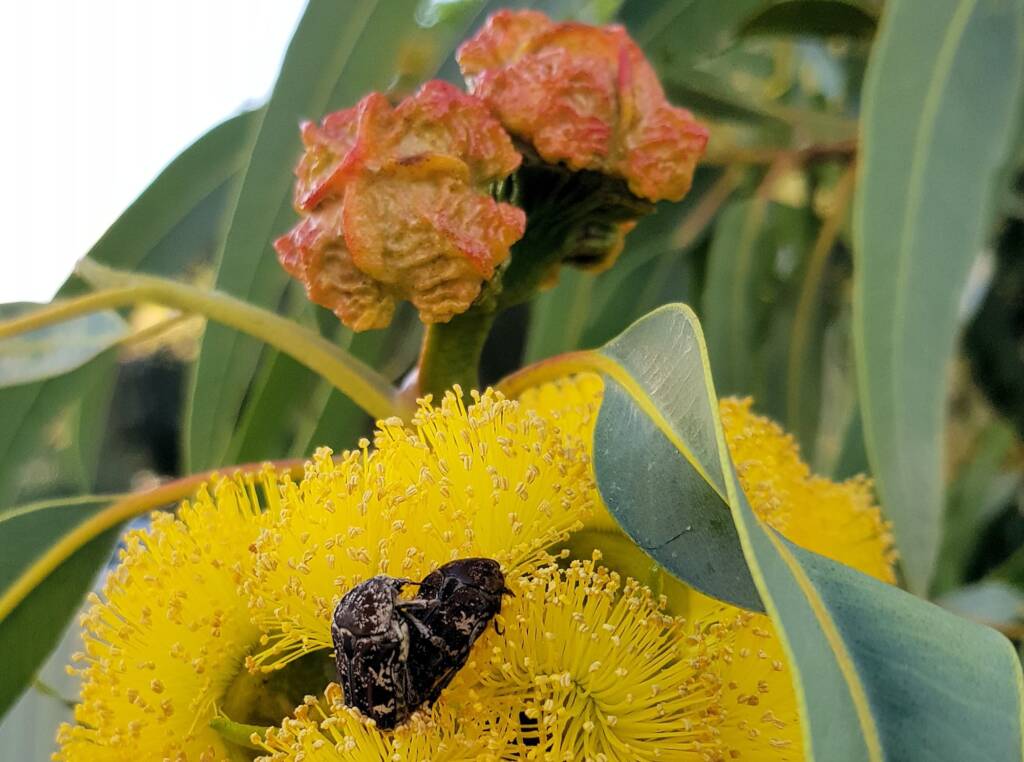ColeopteraAmarygmus sp Anoplognathus sp Aphanestes gymnopleura Buprestidae Cerambycidae Coleoptera (Beetles) Curculionidae Digitonthophagus gazella Dung Beetle Eretes australis Helea scaphiformis Johannica gemellata (Pandorea Leaf Beetle) Ladybirds (Beetles) Lepidiota Lucanidae Neospades sp Lycidae Omorgus Paropsine Beetle Paropsisterna sp Pittosporum Leaf Beetle (Lamprolina impressicollis) Protaetia fusca Pterohelaeus sp Rhipiceridae Scarabaeidae Xylophilostenus octophyllus
Protaetia fusca, known commonly as the Mottled Flower Scarab, the Mango Flower Beetle and the Asian Mango Flower Beetle, are found across northern Australia, in particular present Queensland, New South Wales, Northern Territory and more recently Western Australia.
They have a wide distribution across North America, Caribbean, Indian Ocean (Muritius and Chagos Archipelago), Asia and Oceania (see Distribution below for more information).
They are often attracted to night lights, such as your patio and verandah lights.
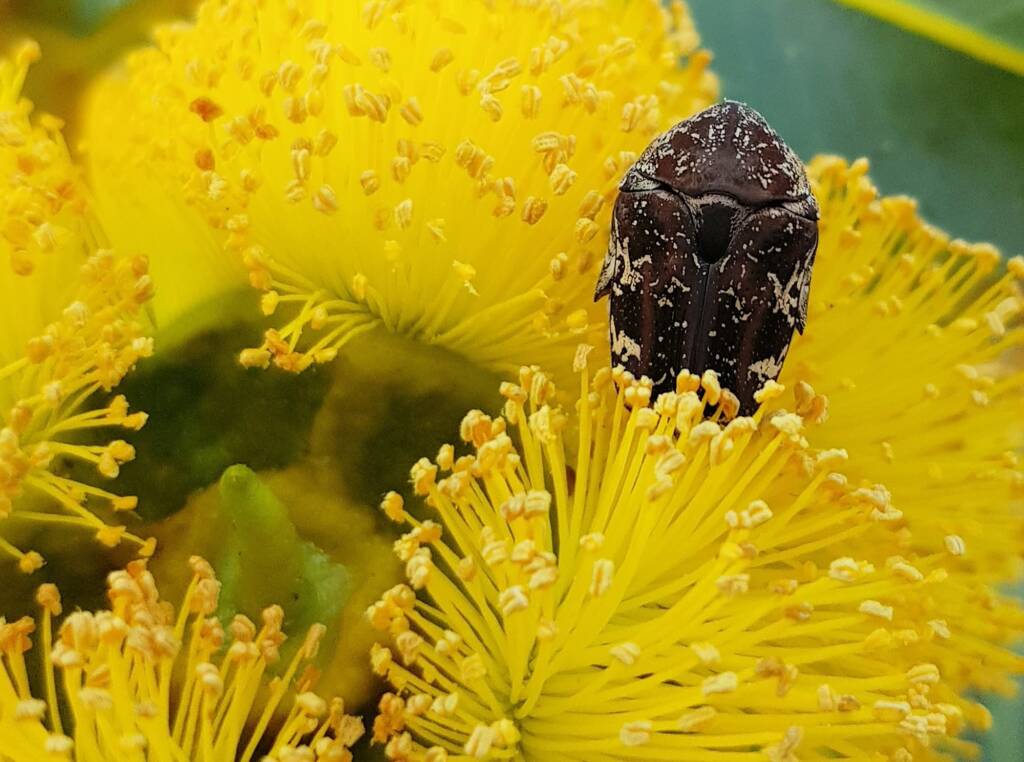
Both adults and larvae are found throughout the year in Australia. The females will deposit as many as 147 eggs in humus during their 6–7 month adult lifespans. The larvae feed on the organic materials within the soil, reaching maturity in about 50 days. The predators of Protaetia fusca include wasps (Scolia spp.) that prey on the larvae, birds, and Aspergillus fIavus (a fungus that sometimes infects adults).5
The adult male Protaetia fusca can be identified by the male elytra spines, which the female lack.

These beetles are found on a range of plants including avocado, peach, mango, citrus, bean tree (Cassia brewsteeri) maize, mango, and Eucalyptus (such as the Red-capped Gum, Eucalyptus erythrocorys). They are known to feed on damaged or fallen fruit.
Following images are of the Protaetia fusca mating on the flowers of the Eucalyptus erythrocorys (Red-capped Gum).
Distribution
Whilst Protaetia fusca has a widespread distribution, across Asia and Oceania, its first document appearance in Hawaii was in 19495, then sudden appearance on the other side of the North American continent, in the Caribbean, was considered surprising.
Distribution. Protaetia fusca has long been known to be widespread in most of southeast Asia, the Philippines, the Dutch East Indies, parts of Australia, Fiji, India, and Mauritius, and had been first collected in Hawaii in 1949 (Maehler, 1950). It was somewhat surprising that it suddenly appeared in the Caribbean…
…In a report for the Australian government, Schotman (1989) reported distribution as Bahamas, Barbados, United States, China (Hong Kong), Singapore…
Source: University of Nebraska – Lincoln6

The mango flower beetle, Protaetia fusca (Herbst 1790) (Coleoptera: Scarabaeidae: Cetoniinae), is a common flower chafer in tropical and subtropical Asia and Australia that has spread to various islands in the Indian and Pacific Oceans over the last sixty years and has recently become established in Florida and some Caribbean islands (Woodruff 2006)…
Source: Proceedings of the Hawaiian Entomological Society (2016) 48:9–13, ResearchGate7
- Scientific classification
- Kingdom: Animalia
- Phylum: Arthropoda
- Class: Insecta
- Informal: Pterygotes
- Order: Coleoptera
- Suborder: Polyphaga
- Superfamily: Scarabaeoidea
- Family: Scarabaeidae
- Subfamily: Cetoniinae
- Tribe: Cetoniini
- Genus: Protaetia
- Species: Protaetia fusca
Footnote & References
- Mango Flower Beetle – Protaetia fusca, Brisbane Insects and Spiders, https://www.brisbaneinsects.com/brisbane_scarabs/MangoFlowerBeetle.htm
- Protaetia fusca (Herbst, 1790), Mottled Flower Scarab, Atlas of Living Australia, https://bie.ala.org.au/species/urn:lsid:biodiversity.org.au:afd.taxon:4576ab2e-b79f-4f8e-9226-dd0d9fca2a00#overview
- Mango Flower Beetle (Protaetia fusca), iNaturalistAU, https://inaturalist.ala.org.au/taxa/349603-Protaetia-fusca
- Mango Flower Beetle, Insects and Organic Gardening, https://insectsandorganicgardening.com.au/all_insects/mango-flower-beetle/
- Protaetia fusca, Hawaiian Scarab ID, ITP Identification Technology Porogram, https://idtools.org/scarab/index.cfm?packageID=2201&entityID=10476
- The Asian mango flower beetle, Protaetia fusca (Herbst), and Euphoria sepulcralis (Fabricius) in Florida and the West Indies (Coleoptera: Scarabaeidae: Cetoniinae), University of Nebraska – Lincoln, UNL Digital Commons
- The Mango Flower Beetle, Protaetia fusca (Herbst), on Wake Island, Western Pacific Ocean (Coleoptera: Scarabaeidae: Cetoniinae)—an Accomplished Island Invasive, Proceedings of the Hawaiian Entomological Society (2016) 48:9–13, ResearchGate,
- Protaetia fusca (Herbst, 1790), An Early Screening Tool for Exotic Scarab Pests to Australia
ColeopteraAmarygmus sp Anoplognathus sp Aphanestes gymnopleura Buprestidae Cerambycidae Coleoptera (Beetles) Curculionidae Digitonthophagus gazella Dung Beetle Eretes australis Helea scaphiformis Johannica gemellata (Pandorea Leaf Beetle) Ladybirds (Beetles) Lepidiota Lucanidae Neospades sp Lycidae Omorgus Paropsine Beetle Paropsisterna sp Pittosporum Leaf Beetle (Lamprolina impressicollis) Protaetia fusca Pterohelaeus sp Rhipiceridae Scarabaeidae Xylophilostenus octophyllus
InsectsBees Beetles Blattodea Butterflies Coleoptera Cicada Crabronidae Diptera Dragonflies & Damselflies Formicidae Hemiptera Heteroptera (True Bugs) Mango Planthopper Moths Orthoptera Orthopteroid Processionary Caterpillar Stink Bugs, Shield Bugs and Allies Syrphidae Wasps Water Scorpion (Laccotrephes tristis) Witchetty Grub

